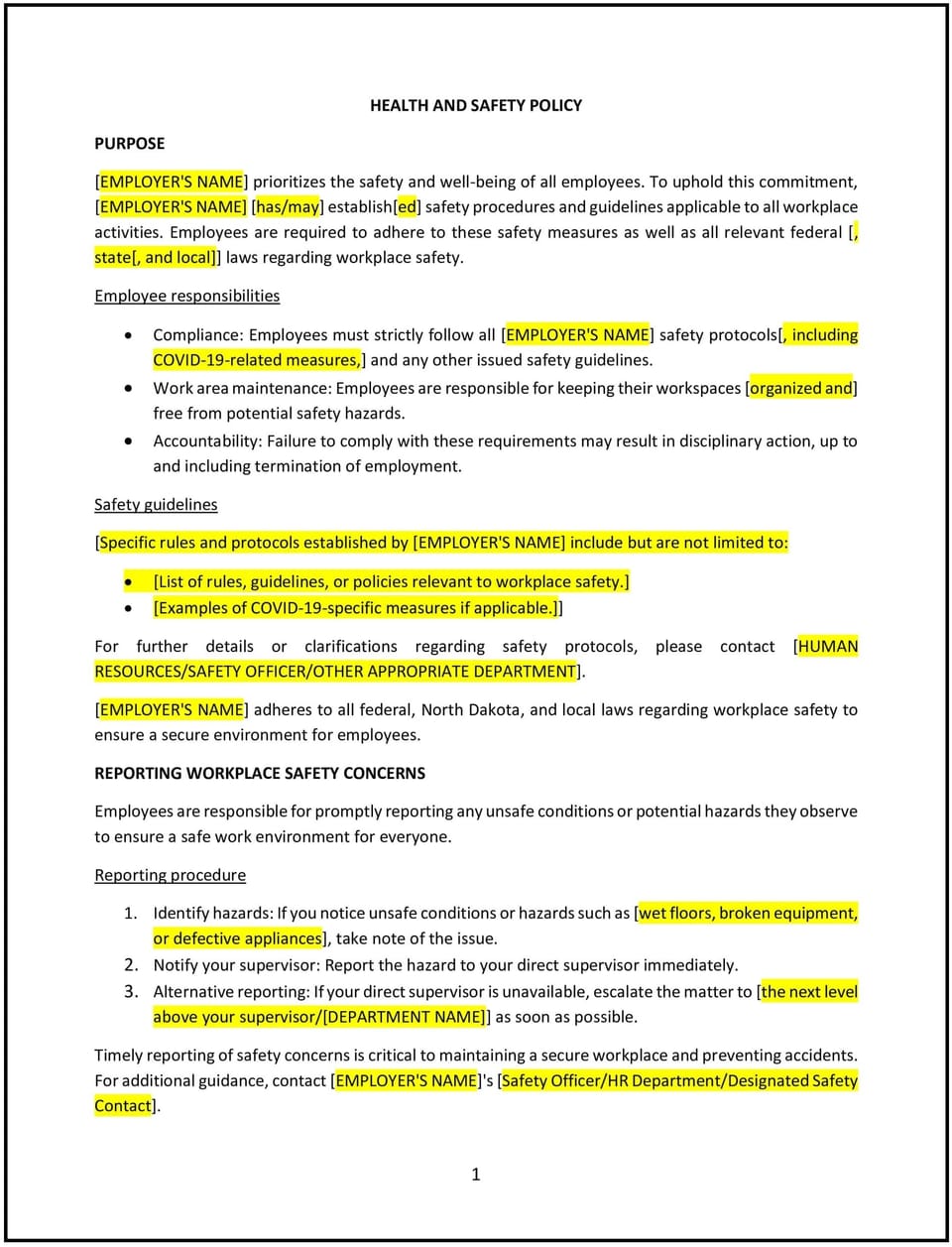Health and safety policy (North Dakota): Free template

Health and safety policy (North Dakota)
This health and safety policy is designed to help North Dakota businesses establish guidelines for maintaining a safe and healthy work environment. The policy outlines hazard prevention, employee responsibilities, and emergency response procedures.
By implementing this policy, businesses can reduce workplace accidents, promote employee well-being, and improve operational efficiency.
How to use this health and safety policy (North Dakota)
- Identify workplace hazards: Assess potential risks related to equipment, materials, and work activities.
- Establish safety procedures: Implement protocols for handling hazardous materials, machinery, and emergency situations.
- Provide employee training: Ensure staff receive safety training relevant to their roles.
- Require personal protective equipment (PPE): Specify when and where PPE is required.
- Set reporting requirements: Encourage employees to report unsafe conditions promptly.
- Implement emergency response plans: Outline evacuation, fire safety, and first aid procedures.
- Review regularly: Update the policy based on workplace changes and new safety regulations.
Benefits of using this health and safety policy (North Dakota)
Implementing this policy provides several advantages for North Dakota businesses:
- Reduces workplace injuries: Lowers the risk of accidents and health-related incidents.
- Enhances legal preparedness: Aligns workplace safety practices with state and industry guidelines.
- Improves employee morale: Demonstrates a commitment to worker well-being.
- Supports operational efficiency: Minimizes disruptions caused by safety incidents.
- Reflects North Dakota-specific considerations: Addresses local industry safety needs, such as agriculture and energy sectors.
Tips for using this health and safety policy (North Dakota)
- Conduct regular safety inspections: Identify and address potential risks proactively.
- Encourage employee participation: Involve staff in safety planning and feedback sessions.
- Maintain proper documentation: Keep records of safety training and incident reports.
- Establish clear reporting channels: Ensure employees can report concerns without retaliation.
- Adjust as needed: Update policies based on evolving workplace conditions.
Q: What are the key safety responsibilities of businesses?
A: Businesses should provide training, enforce safety procedures, and maintain a hazard-free environment.
Q: How should businesses handle workplace injuries?
A: Businesses should have first aid procedures in place and document all incidents.
Q: Are employees required to wear PPE at all times?
A: Businesses should define PPE requirements based on specific job duties.
Q: What should businesses do if an employee reports a safety concern?
A: Businesses should investigate the concern and take corrective action promptly.
Q: How often should this policy be reviewed?
A: The policy should be reviewed annually or whenever workplace conditions change.
This article contains general legal information and does not contain legal advice. Cobrief is not a law firm or a substitute for an attorney or law firm. The law is complex and changes often. For legal advice, please ask a lawyer.


